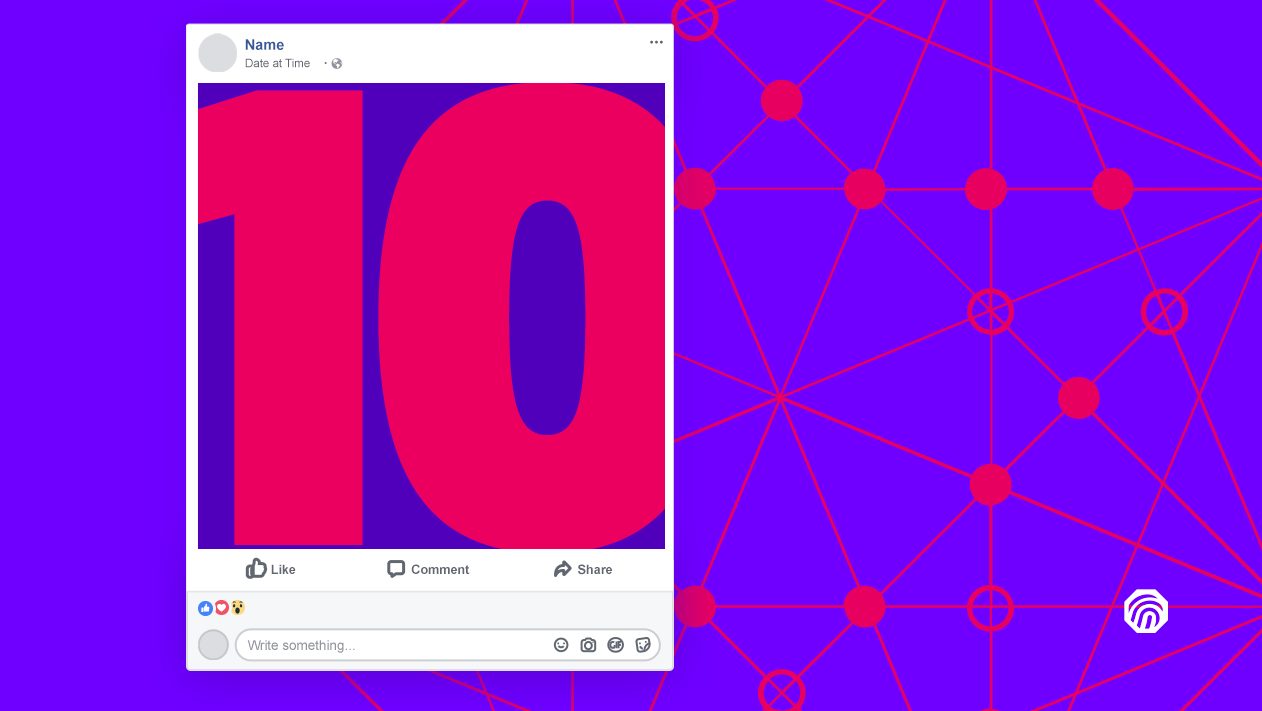One of the biggest challenges of maintaining a consistent flow of quality content to your company’s social media pages is knowing what to post. It’s important to keep your page interesting with a variety of different content types, and to choose the types that get the most Engagement. Greater Engagement increases your Reach, which means more Followers see your content. When Followers engage with and share your content, they increase your chances of attracting more Followers.
Social media is an affordable form of marketing for small retail businesses, and planning your content goes a long way. Below are the 10 most effective types of posts you can share on your Facebook or Instagram feeds for your store.
- Animated Gifs

Share a funny or attention-getting gif, or create one using an online tool. Gifs are impossible to ignore and enable you to show your store’s personality. Just make sure to keep the message appropriate and on-brand. You may need to do a little research just to make sure a particular gif hasn’t developed any negative associations in the popular imagination.
- Caption Contests

Post an unusual photo (that you own the rights to) and ask followers to create a funny or fitting caption. It might include one of your products or employees, or something completely random. Give a deadline, announce the winner and, if possible, offer a prize.
- Shares or Reposts From Your Brands

Follow the brands you carry so you see when they post something that gets a lot of engagement, then share it to your own feed. You can add your own insights or mention whether you have a particular product currently in stock. You can also ask your customers what they think about a certain product.
- Customer Spotlights

Ask if you can take a photo of a customer with a product they just purchased, or ask them to submit their own, and share it to your page. It’s likely they will share it themselves, garnering engagement from their personal connections.
- Surveys

People love to weigh in with an opinion. Ask them to pick their favorite out of four things, or ask for predictions related to your industry. Make sure to share the results later and thank everyone who participates.
[Callout] Video content of any kind performs better than static images in every metric by at least 50%. In our analysis, video content got 856% more clicks and impressions increased by an average 160%.
- Company Culture Posts

Show the humanity behind your business by showcasing projects in which you give back to your community, participate in sustainability initiatives, or otherwise make the world a better place. Make sure to tag any partner organizations or participants. Or, simply share the opinions and personalities of your team members.
- Links to Your Blog

A blog is a great place to build trust with your follower base and share deep insights about how to get the most out of your products. It’s also a great source of social media content. Share new blog posts as you publish them, or go back a little bit to share something older that’s become relevant again. Bonus tip: Make sure your blog has great images and that they’re set to display when someone shares a link.
- Fun Facts

Find an amazing piece of trivia about your company, your industry, or an area of interest to your followers and share it. This is what the internet was made for. Post your fun facts as text or turn them into graphics.
- Infographics

Infographics are easy to read and are widely shared. They can actually double your traffic. Create your own or share infographics created by others (with credit, of course). Choose topics that teach people something new about your industry, especially those that help users get more value out of your products.
- Brand-Specific Sales and Promotions

Your followers care about the brands and products you carry, and everybody loves a deal. That might be the reason they followed you in the first place. Share timely, accurate information whenever a brand you carry is offering a promotion so your customers can take advantage of it. Keep a calendar of upcoming sales so that you remember to share well ahead of time and get customers in your door.
Sit Back and Let ThumbStopper Handle the Heavy Lifting

Items #3 and #10, while among the most effective, can be the most challenging to manage. You have a business to run and can’t always pay attention to what your brands are posting to their social media channels. ThumbStopper takes that work off your plate. You subscribe to feeds from top brands, and their content goes straight to your social media feeds, with current, accurate details timed for when your customers are most likely to see it. Brands have big budgets for great imagery too, so your products will always look amazing. Request a demo today to see ThumbStopper in action.
Still need ideas for social media posts? Try our social post builder.




